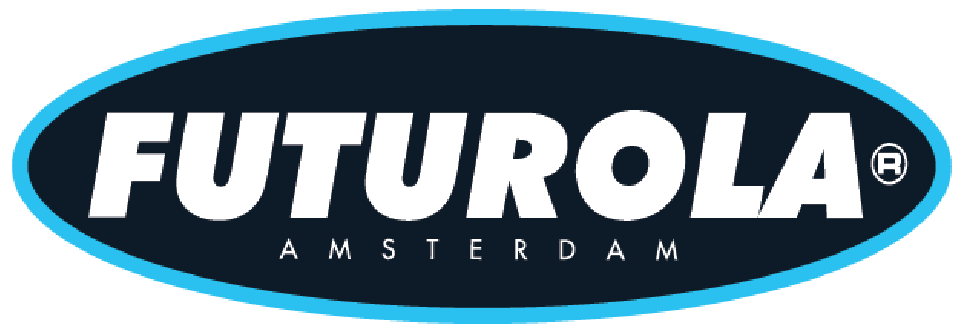Cannabis pre-roll market sales reached $4.1 billion across tracked states in 2024, representing 40% year-over-year growth. This explosive demand has exposed critical bottlenecks in traditional production methods, forcing producers to seek automated solutions that can scale efficiently while maintaining quality standards.
Manual packing creates three fundamental problems that worsen with scale: speed limitations (50-100 pre-rolls per hour), quality inconsistency (20-30% fill weight variance), and high labor costs. Cone rollers solve these challenges by automating the most time-intensive aspects of pre-roll production, enabling businesses to produce 500-1,500 units per hour with minimal variance and reduced staffing requirements.
This guide examines how cone roller technology transforms pre-roll operations, from basic functionality to advanced features that integrate with complete production lines.For producers looking to maximize their equipment investment, mastering cone rolling tools and techniques ensures consistent output quality and extends equipment longevity through proper maintenance practices.
Why Manual Packing Cannot Scale Effectively
Traditional hand-packing requires 36-72 seconds per pre-roll, creating immediate capacity constraints as demand increases. Even experienced workers struggle to maintain consistency, with fill weights varying 20-30% between individual units. This variance directly impacts burn quality, potency distribution, and customer satisfaction.
The physical demands compound these limitations. Repetitive tamping and packing motions cause worker fatigue and potential injury risks, while the skills required for consistent manual packing take 4-12 weeks to develop properly. As production volumes increase, businesses face exponentially growing labor costs and management complexity.
Most critically, manual methods offer no clear scaling path. Doubling output requires proportionally doubling labor, workspace, and oversight, making sustainable growth expensive and operationally complex.
Cone Roller Technology and Core Functionality
Cone rollers are specialized machines that fill 50-500 pre-rolled paper cones simultaneously using controlled vibration, compression, or rotation systems. These devices reduce production time from minutes per unit to seconds per unit while eliminating human variability in the packing process.
Electronic cone rollers use motorized vibration at 50-100 Hz frequencies to settle material uniformly throughout each cone. Advanced systems incorporate 10-50 PSI compression controls to achieve specific density targets between 0.4-0.8 g/cm³, ensuring consistent burn characteristics across all produced pre-rolls.
Modern machines feature sophisticated components including adjustable vibration systems, smart sensors for position detection, and automated compression controls. These elements work together to maintain fill weights within 2-5% variance, a dramatic improvement over manual methods.
The distinction between electronic and non-electronic models lies in their automation level. Non-electronic versions rely on manual bumping or tapping motions, while electronic systems use motorized components to automate the entire packing process, delivering superior consistency with minimal operator intervention.
Five Critical Improvements Cone Rollers Deliver
Cone rollers address the most challenging aspects of pre-roll production by automating manual processes that are time-consuming, inconsistent, and labor-intensive. The following improvements demonstrate how this technology transforms operations across multiple key performance areas, delivering measurable benefits that directly impact profitability and operational efficiency.
Dramatic Production Speed Increases
Cone rollers enable workers to fill 50-500 cones simultaneously in 3-10 minute cycles, compared to manual methods requiring individual attention for each cone. Mid-range electronic machines process 100-300 cones per cycle, with total production reaching 500-1,500 pre-rolls per hour using the same labor resources that previously produced 50-100 units manually.
This 5-15x improvement in production capacity creates immediate operational advantages. Producers can meet larger orders without expanding staff, respond quickly to demand spikes, and achieve better equipment utilization throughout production shifts.
Consistent Fill Weights and Quality Control
Automation eliminates the human variability that creates inconsistent products in manual operations. Cone rollers use volumetric metering systems and controlled compression to deliver uniform fill weights within 2-5% variance, compared to the 20-30% variance typical in manual packing.
This mechanical precision ensures each pre-roll receives identical packing pressure and material distribution. The consistency translates directly to improved burn characteristics, predictable potency delivery, and enhanced customer satisfaction with the final product.
Reduced Labor Requirements and Training Complexity
Cone roller operations require only a single operator to manage automated machines that previously needed 3-5 workers for equivalent hand-packing output. This represents a 60-80% reduction in labor costs while freeing experienced staff for value-added activities like quality control, inventory management, or customer service.
Training requirements simplify dramatically with automated systems. New operators need just 2-4 hours to become proficient with cone rollers, compared to the 4-12 weeks required for developing skilled hand-packing techniques. This 90% reduction in onboarding time enables flexible staffing arrangements and reduces hiring constraints.
Elimination of Physical Strain
Manual packing involves repetitive tamping, twisting, and handling motions that cause fatigue and potential injury over extended periods. Cone rollers automate these physically demanding aspects, allowing workers to maintain consistent performance throughout their shifts without the strain associated with traditional methods.
Improved working conditions often lead to higher employee satisfaction and reduced turnover in production roles, providing additional operational benefits beyond direct productivity gains.
Scalable Growth Infrastructure
Cone rollers provide a clear path for scaling production without proportionally increasing labor costs or operational complexity. Adding additional machines multiplies output capacity while maintaining consistent quality standards and operational simplicity.
The modular nature of cone roller systems enables businesses to start with entry-level equipment and expand capabilities as demand grows. This scalability eliminates the need for complete operational overhauls when increasing production volumes, making growth more manageable and cost-effective.
Selecting the Right Cone Roller System
Equipment selection depends on current production needs, budget constraints, and growth projections. Understanding the three main categories helps ensure optimal value for specific operational requirements.
Entry-Level and Semi-Automatic Systems
Entry-level cone rollers handle 50-100 cones per cycle at $500-$2,000 price points, making them ideal for operations producing fewer than 1,000 pre-rolls daily. Semi-automatic machines incorporate basic electronic components like vibration motors while maintaining simple operation and maintenance requirements.
These systems offer excellent starting points for businesses transitioning from manual processes without overwhelming capital requirements or complex training needs. For operations considering whether to upgrade beyond semi-automatic equipment, understanding whether electric cone rollers are more efficient helps determine if the investment in fully electronic systems justifies the additional cost.
Mid-Range Electronic Machines
Electronic cone rollers accommodate 100-300 cone batches with adjustable vibration intensity from 20-80 Hz and compression settings from 10-40 PSI for different material types. Priced between $2,000-$8,000, these machines suit operations producing 1,000-2,000 pre-rolls daily.
Mid-range systems often include metering systems for consistent fill volumes, tamping tools, and collection trays. Popular models in this category can produce 1,000-2,000 pre-rolls per hour with proper operation and material preparation.
Fully Automated High-Volume Systems
Enterprise cone rollers process 300-500+ cones per 5-10 minute cycle, featuring automated Dutch crown folding, weight variance sensors maintaining ±2% accuracy, and integration capabilities with industrial grinders and packaging equipment. These systems cost $8,000-$25,000 but deliver proportional returns through maximized efficiency.
High-volume systems suit established operations with consistent demand exceeding 2,000 daily units and the infrastructure to support advanced equipment maintenance and operation.
Advanced Features for Complete Automation
Modern cone rollers extend automation beyond basic filling operations through sophisticated features that address the entire pre-roll production process.
Automated folding systems complete Dutch crown closures in 2-5 seconds per cone compared to 15-30 seconds for manual folding, addressing the most time-intensive finishing step. Smart sensors automatically detect cone positioning and adjust compression levels based on material characteristics without manual intervention.
Multi-size versatility allows modern machines to handle various cone sizes and even pre-roll tubes without requiring separate equipment. Quick-change systems enable operators to switch between different product sizes efficiently, maximizing equipment utilization and production flexibility.
Integration capabilities with supporting equipment like industrial grinders, sifting systems, and packaging machinery create complete automated production lines. This comprehensive approach eliminates manual handling between process steps and further streamlines overall operations.
Implementation Strategy and Best Practices
Successful cone roller implementation requires proper equipment selection and optimized workflow integration to maximize return on investment while avoiding common pitfalls. Strategic planning during the implementation phase ensures smooth transitions and optimal performance from day one.
Accurate Needs Assessment
Production volume represents the primary determining factor in machine selection. Daily output targets, available space, budget constraints, and product variety requirements all influence optimal equipment choices. Operations should also consider future growth projections to avoid outgrowing equipment too quickly.
Power requirements, workspace design, and material flow patterns must complement new equipment capabilities rather than forcing machines into unsuitable environments. Proper planning ensures smooth integration and optimal performance from implementation day forward.
Maintenance and Performance Optimization
Regular maintenance schedules and proper cleaning procedures are essential for maintaining peak performance and extending equipment lifespan. Daily cleaning protocols prevent material buildup that can affect machine performance and product quality.
Weekly maintenance checks and periodic deep cleaning should be established as standard operating procedures. Training operators on both technical operation and basic troubleshooting ensures smooth ongoing operations and minimizes downtime.
Overcoming Common Implementation Challenges
Even well-planned cone roller implementations can encounter obstacles that impact performance and ROI. Understanding these common challenges and their solutions helps businesses navigate the transition successfully while maximizing their equipment investment.
Material Variability Management
Different cannabis strains exhibit varying density, moisture content, and flow characteristics that can affect packing performance. Modern machines address this through adjustable compression settings and adaptive controls that accommodate material variations automatically.
Operators should establish baseline settings for different material types and maintain consistent moisture levels through proper storage and preparation procedures.
Transition Planning
Successful implementations involve gradual transitions that allow operators to develop familiarity with new equipment while maintaining production continuity. Training programs should focus on both technical operation and troubleshooting skills.
Consider running parallel operations during transition periods to maintain output while building operator confidence and identifying optimal settings for your specific materials and products.
Investment Justification
ROI calculations must include initial equipment costs, labor savings, increased capacity, and quality improvements for accurate projections. Cone rollers typically deliver 60-80% labor cost reduction, 5-15x capacity improvement, and 85% variance reduction (from 20-30% to 2-5%).
The scalability benefits become particularly valuable when projecting long-term returns, as automated systems enable growth without proportional increases in labor costs or operational complexity.
Transform Your Production Operations
Cone rollers solve the four core problems that limit manual packing operations: slow production speeds, inconsistent quality, high labor costs, and scaling difficulties. The technology delivers quantifiable improvements across all these areas while providing a foundation for sustainable business growth.
Whether you're a small producer seeking efficiency improvements or an established operation planning expansion, cone rollers provide the automation foundation necessary to compete in today's rapidly growing cannabis market.
The cannabis industry continues expanding at unprecedented rates. Businesses that automate their packing operations position themselves to capture larger market shares while building operational capabilities that support long-term success. Ready to transform your operation? Explore Futurola to revolutionize your pre-roll production efficiency and quality standards.





LEAVE A COMMENT
All comments are moderated before being published.
This site is protected by hCaptcha and the hCaptcha Privacy Policy and Terms of Service apply.